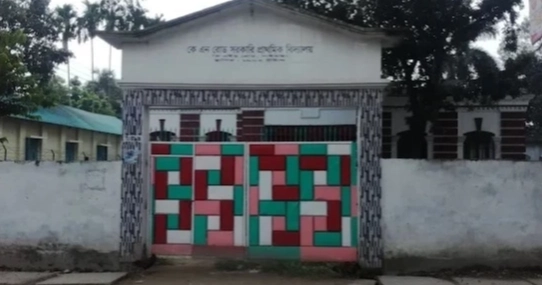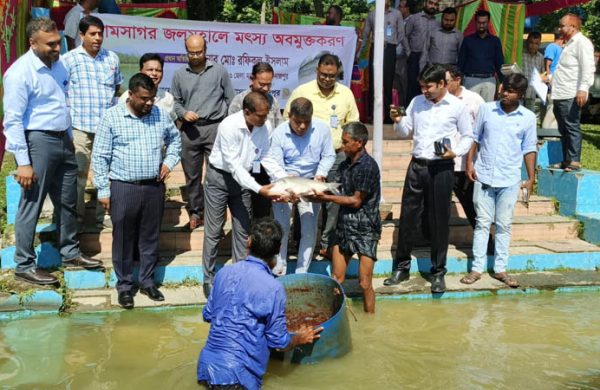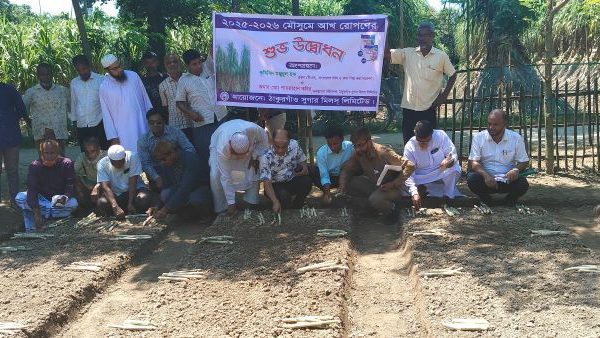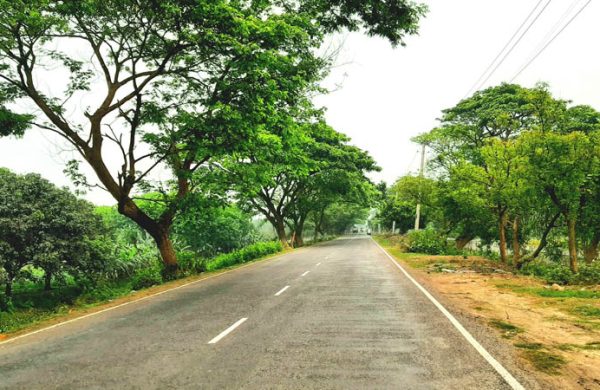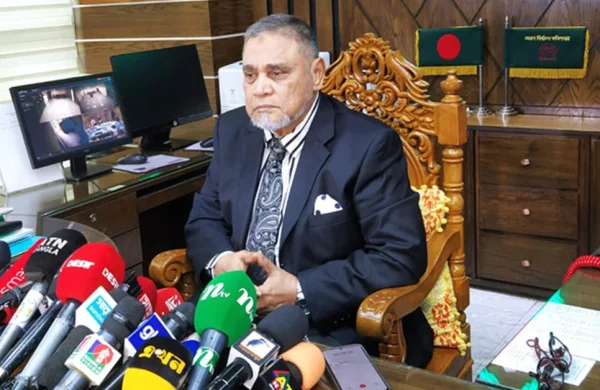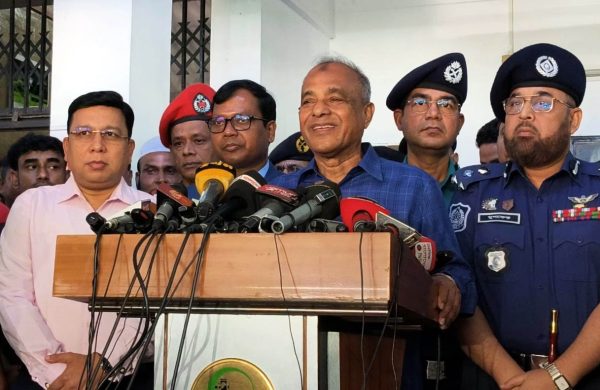Flood, erosion nightmare haunt Jamalpur dwellers
- Update Time : Sunday, June 1, 2025

Jamalpur Correspondent:
Sixty-year-old Somiran Bibi’s home teeters on the edge of the Jamuna River. What was once a peaceful village life in Pakrul, Jamalpur, has turned into a daily battle for survival.
For the last three months, Somiran, her 80-year-old husband Didarul, and their two sons have taken turns staying awake at night. The fear: the river might swallow their home while they sleep. Already, three-fourths of their village has been devoured. Only parts of the eastern and northern sides remain.
On May 21, Somiran was found sitting beside her farmland, gazing into the distance. When asked where her house was, she pointed at the river and said: “This Jamuna is my house now. It has destroyed my home four times in 30 years. I’ve lost 27 bighas of land. Last month alone, half my crop field disappeared.”
For the past decade, her family has moved several times—now living temporarily on land that could also vanish. The western side of Pakrul, where they once owned land and property, is now completely submerged.
A CRISIS REPEATING ITSELF
Pakrul’s story is not unique. Thirty-year-old Ashraf has lost 25 bighas in 25 years. Two years ago, he moved his house by boat during floods, taking a Tk100,000 loan. He repaid it by selling his cow. “This year, I have no money and can’t take another loan,” he said.
The unpredictability makes matters worse. “Sometimes we think erosion will hit in three days, sometimes seven. Often, we miscalculate—and then it’s too late,” said Akbar.
Ajmeri, 36, now lives in a hut on a relative’s land. She has lost her home, livestock, and land. Her children no longer attend school. “My mother-in-law lost her memory from the trauma,” she said. The interest on her loans continues to pile up.
On Thursday, Somiran told this reporter by phone that the erosion had reached within 20 yards of their current house. “We’re watching over the cows. If the river reaches us, we’ll flee—but we know we can’t save the house.”
She also said: “The disaster of river erosion during the terrible floods last year added a new chapter to our struggle for survival. We have not yet been able to recover, and in the meantime, erosion continues.”
When asked why they hadn’t moved immediately, Abdullah, 55, said: “We will guard our house as long as we can.”
WHEN EVERY PENNY COUNTS
Despite warnings, few can afford to leave in time. “Even if we know the river’s coming, we don’t have money to move,” said Ashraf. Relocating a house by boat can cost Tk50,000 during floods.
Ajmeri said it costs at least Tk50,000 to move a house by boat during flooding. Relief support is minimal—just 10 kg of rice from shelter centers. “Last year, we got Tk5,000 from a project when we couldn’t save anything except the clothes we were wearing during the terrible flood. With that money, we bought dry food, medicine, and hired transport to go to safe places. That small amount was a lifeline.”
Mohammad Alamgir Hossain, Assistant Project Officer of the SUFAL (Supporting Flood Forecast-based Action and Learning) project under CARE Bangladesh, acknowledged this reality. “Even Tk1 can be critical before disaster strikes,” he said.
The SUFAL project has been operating in four unions—Charpakerdah, Balirjuri, Jurkhali, and Gunaritala—of Madarganj upazila in Jamalpur district, and partially in Pingna union of Sarishabari upazila, for two years since 2022.
The project was funded by the Directorate-General for European Civil Protection and Humanitarian Aid Operations (ECHO) and implemented through a consortium led by CARE Bangladesh, along with Concern Worldwide, Islamic Relief, and the Regional Integrated Multi-Hazard Early Warning System for Africa and Asia (RIMES).
SUFAL focuses on anticipatory action during floods and has provided pre-disaster financial support—Tk5,000 each—to about 750 families, totaling over Tk37 lakhs, in Jamalpur, Kurigram, Gaibandha, and Bogra.
“People usually receive aid after disasters or in shelters. But they need it beforehand to reduce losses. That’s what anticipatory action offers,” Alamgir added. “Still, many are reluctant to evacuate—even with warnings.”
“Just as we reached people through forecast warning messages with the help of government collaboration and volunteer groups during the floods, similarly, they can prepare in advance if they receive timely messages about river erosion,” he added.
ANTICIPATORY ACTION MATTERS
Ahazuddin Fakir, Member of Union Parishad, Ward No 1, Madarganj upazila, Jamalpur, said: “Our Ward No 1 is the poorest in Charpakerdah Union. Around 40 houses, including a cluster village, are now at risk from river erosion. At this rate, they’ll be gone by year’s end.”
He said floods and erosion struck simultaneously last year, compounding the suffering. “Floods come with some warning, but erosion is silent. People guess—seven days, maybe 15—but often they guess wrong.”
The need, he stressed, is urgent: “They need anticipatory action, clear information, and small emergency funds—before it’s too late.”
Farmers’ year-long savings vanish into the river. “Two of our three shelters were lost to erosion in 2023. Our primary school was also washed away last year in the floods—river erosion was the culprit. Now, only one shelter houses 100 families, and two cluster villages house 70 more. We have 2,800 people and 1,040 families here,” he said.
The Jamuna River continues to take more than just land—it takes stability, education, livestock, and peace of mind. Yet for families in Pakrul, staying put feels like the only option they can afford.



